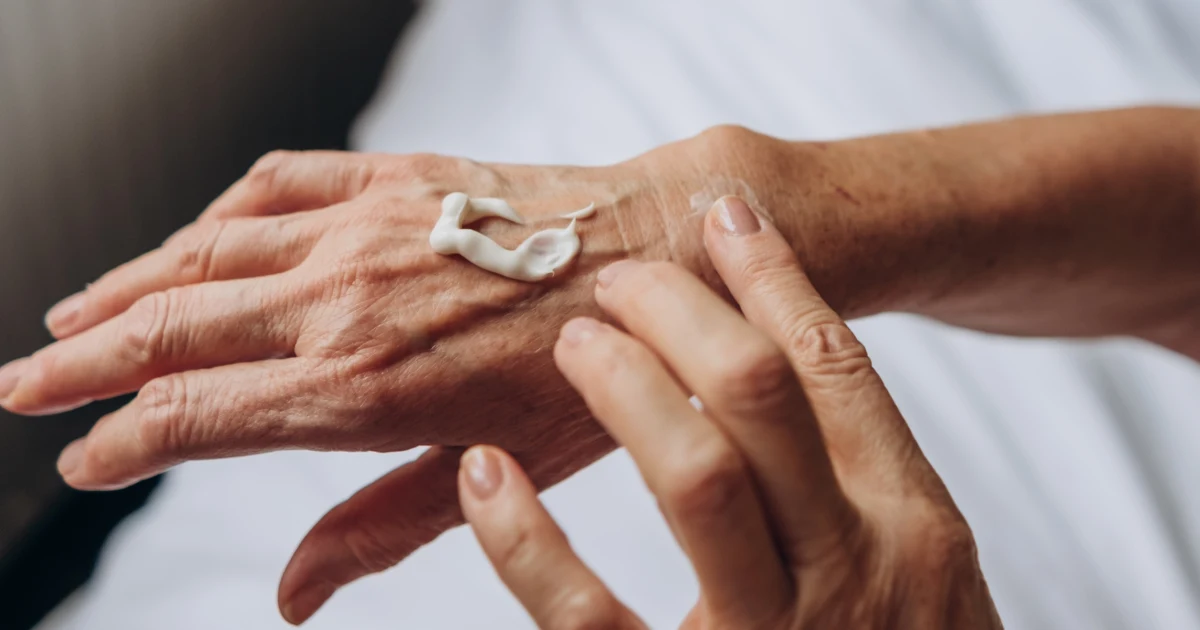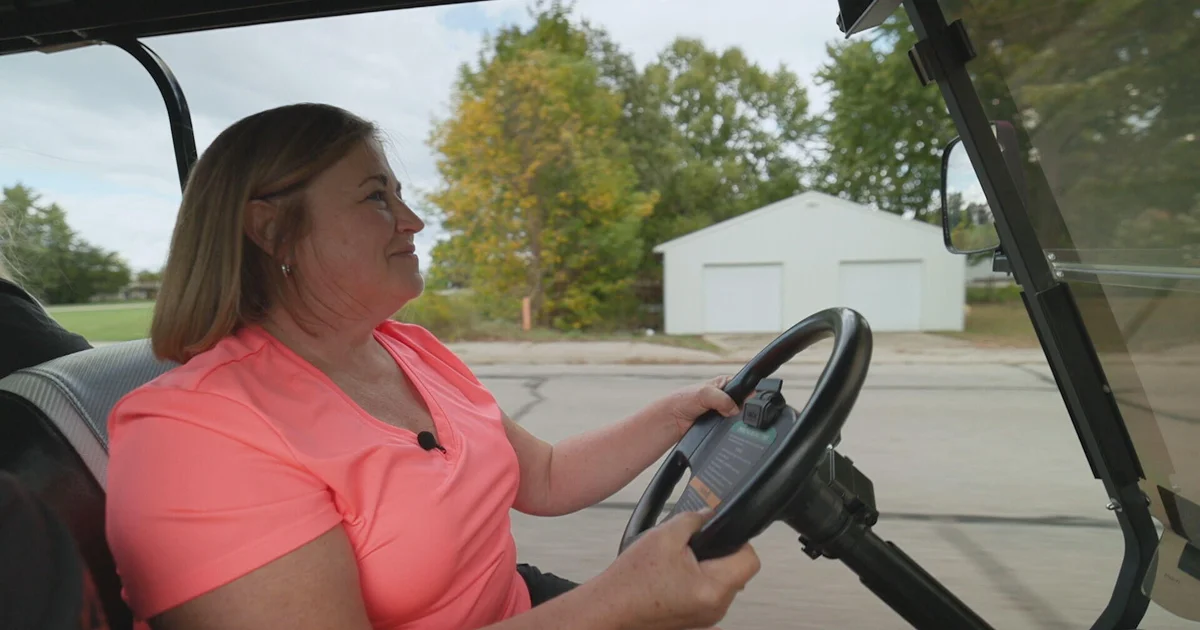Copyright NBC News

Dealing with a wart? Those unsightly tiny flesh-colored or pink bumps are generally harmless, says Dr. Nava Greenfield, a board-certified dermatologist at Schweiger Dermatology Group in New York City. Of course, that doesn’t mean you want them to stick around. Getting rid of them at home can be tricky. Like many skin conditions, there is no one-size-fits-all approach — in fact, warts is an umbrella term that covers various sizes, appearances, textures and locations on the skin. To help you understand more about this condition, I spoke to experts about what causes them, the different types and what at-home remedies are actually worth considering. What causes warts? The human papillomavirus (commonly known as HPV) causes warts. There are many different strains of this virus — some of which cause warts, while others do not, says Dr. Brendan Camp, a board-certified dermatologist of MDCS Dermatology. Different strains can cause warts in specific areas of the body, including the hands, feet and genitals, he adds. “Most strains do not cause harm,” says Greenfield. “Though there are some strains that are associated with higher risks, including cervical cancer.” To determine what strain you have, you need to consult a doctor. In terms of how someone gets a wart, there are a number of ways — but they all come down to coming in contact with someone or something that has been infected. Some strains are sexually transmitted, while other strains may be passed through coming in contact with an object that someone else with a wart has touched, says Greenfield. It is also helpful to know that anyone can get warts — regardless of age, race or sex, says Greenfield. People with a compromised immune system may be more susceptible to developing warts, adds Dr. Matthew LaCour, a board-certified dermatologist at Westlake Dermatology in Austin, Texas. Warts are also common amongst kids, with a prevalence estimated to be approximately 20%, says Greenfield. “This is because many kids have not developed the immunity to as many types of HPV.” Types of warts As mentioned, there are many different types of warts. These are the most common, according to experts: Common: Common warts, known as verruca vulgaris, typically occur on hands, feet, and knees and look like rough, skin-colored bumps, says Camp. Flat: Flat warts, known as verruca plana, appear as mildly elevated, subtle skin-colored lesions, says Greenfield. Like common warts, these can appear on the face, hands and legs but are not as raised, says Camp. Foot/Plantar: Greenfield says that unlike their elevated alternative, foot warts typically grow into the skin. This type is often considered stubborn because it may become inverted when walked on. They appear as thick yellow, brown, or white bumps on the bottom of the foot and often have a thick overlying callus, says LaCour. He says there may also be overlying black dots, which represent small blood vessels. Filiform: Filiform means threadlike, says Camp. This type of wart has a more narrow and extended protrusion from the skin, according to Greenfield, who notes that they grow quickly and are commonly seen around the mouth, eyes, and nose. Want more from NBC Select?Sign upfor our newsletter, The Selection, and shop smarter. Are warts preventable? Some types of warts, such as those sexually transmitted types, are preventable with a vaccine that boosts the body’s natural protection against certain strains of HPV, says Greenfield. Other types of warts are acquired by coming into contact with someone with a wart or touching something that someone with a wart has touched. As a result, it is essential to practice personal hygiene, according to our experts. “To avoid infection with HPV and the development of a wart, wash your hands regularly throughout the day, especially after being in a communal environment like a gym,” says Camp. “If you have rough, dry skin, make sure to keep it moisturized to maintain the integrity of the skin barrier. When the skin barrier is compromised (think red, dry, irritated skin), it is more susceptible to infection, like HPV.” If you are exposed to HPV, it could take days, weeks or even months for you to develop a wart, says LaCour. “Everyone’s immune system reacts differently to this virus, so there is not a specific known timeline,” he says. While warts can spread at different rates, you can prevent them from spreading quickly. Camp says it’s important to avoid picking at or shaving over them. A break in the skin around a wart creates an opportunity for the wart virus to spread. What is the best way to treat warts? If you want to care for warts in the most effective, safe way, make an appointment with a dermatologist — our experts agree that in-office treatments are most effective. After a dermatologist examines the warts, they can determine which treatment is best. For example, flat warts may need freezing with either liquid nitrogen, electrodesiccation or prescribed topical medications, says Camp. Other warts, like filiform warts, are treated with liquid nitrogen (freezing), or depending on the size and location, they can also be surgically removed, he says. Some other in-office treatments include injecting warts, shaving them off and more, according to Greenfield. There are also over-the-counter treatments available. “They are not always effective,” says Greenfield. “And you should be careful with using anything too abrasive — especially on your face, because you risk scarring.” Over-the-counter treatments for warts Want to try an at-home wart treatment? Camp says that most available wart treatments contain salicylic acid at a higher concentration than what would be used to treat acne. You can find gels or bandages that can be applied to stubborn warts. These help digest or break down the wart and irritate the surrounding skin to stimulate the body’s immune system, says Camp. Below, I’ve rounded up over-the-counter wart treatments. All of them are either recommended by an expert or have a 4-star average rating from hundreds of reviews. Camp and LaCour recommend this topical gel because it’s easy to apply. It has 17% salicylic acid and can be applied to common warts and plantar warts, according to Camp. To help maximize its effectiveness, consider soaking the affected area for five minutes, drying it, and then applying the gel, Camp says. This treatment is made of 17% salicylic acid. Brush it onto the wart and it turns into a mask within 30 seconds — protecting the wart and allowing the treatment to really sink in, according to the brand. It should be used twice a day for four days for maximum effectiveness. Camp also recommends this product because the bandage has 40% salicylic acid. It’s great because it can be cut into any size or shape, making it perfect for your specific warts. It also has a good adhesive, so it stays put, says LaCour. These pads have a 40% salicylic acid solution on them. The box contains 42 different adhesive pads that come in two different sizes, to help you treat different sized warts. If you are putting the pad in an area that may encounter a lot of friction (like the ball of your foot), there are extra bandages included that you can use to keep the pad secure. Made specifically for plantar warts on the sole of our feet, these pads are extra cushioned to relieve pain as you walk, according to the brand. The pad is soaked in salicylic acid and you get 24 medicated disks in a pack. What is the duct tape method for warts? Along with over-the-counter products, there are a number of at-home treatments people try. One of the more popular treatments is the duct tape method. It involves covering a common wart with duct tape to create an environment that causes local skin irritation, either through the skin’s reaction to the adhesive or the accumulation of moisture under the tape, says Camp. This irritation may stimulate the body’s immune system, which can help rid the wart virus from the skin, according to Camp. “I will often recommend patients use a topical salicylic acid or prescription medication and then cover that area with a piece of duct tape,” says LaCour. Once the skin becomes white and macerated, you can use a pumice stone (post-shower) to gently scrape away the skin, says Greenfield. As always, it is wise to consult with a doctor before trying this method. Meet our experts At NBC Select, we work with experts with specialized knowledge and authority based on relevant training and experience. We also ensure all expert advice and recommendations are made independently and without undisclosed financial conflicts of interest. Dr. Nava Greenfield is a board-certified dermatologist at Schweiger Dermatology Group in New York City. Dr. Brendan Camp is a double board-certified dermatologist and dermatopathologist at MDCS Dermatology in New York. Dr. Matthew LaCour is a board-certified dermatologist at Westlake Dermatology in Austin, Texas. Why trust NBC Select? Bianca Alvarez is a former associate reporter for NBC Select who has covered skin care, hair care and gift guides. For this story, she interviewed three dermatologists, shared their recommendations, and researched highly rated wart treatments that met their guidelines. Bethany Heitman is a contributor at NBC Select and a journalist who regularly covers topics like beauty, home and lifestyle. She has recently reported on back acne, wrinkle patches and skin flooding.



